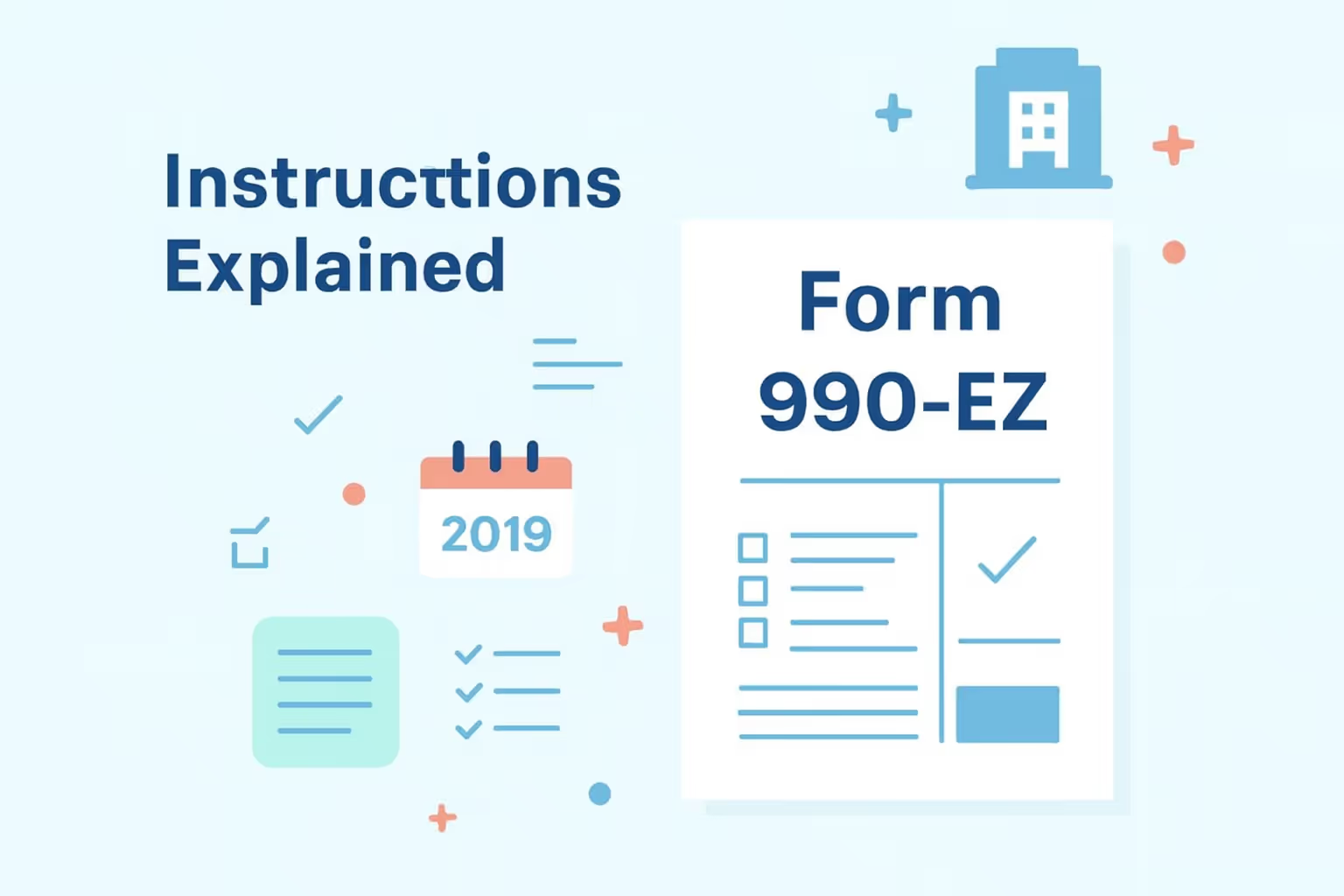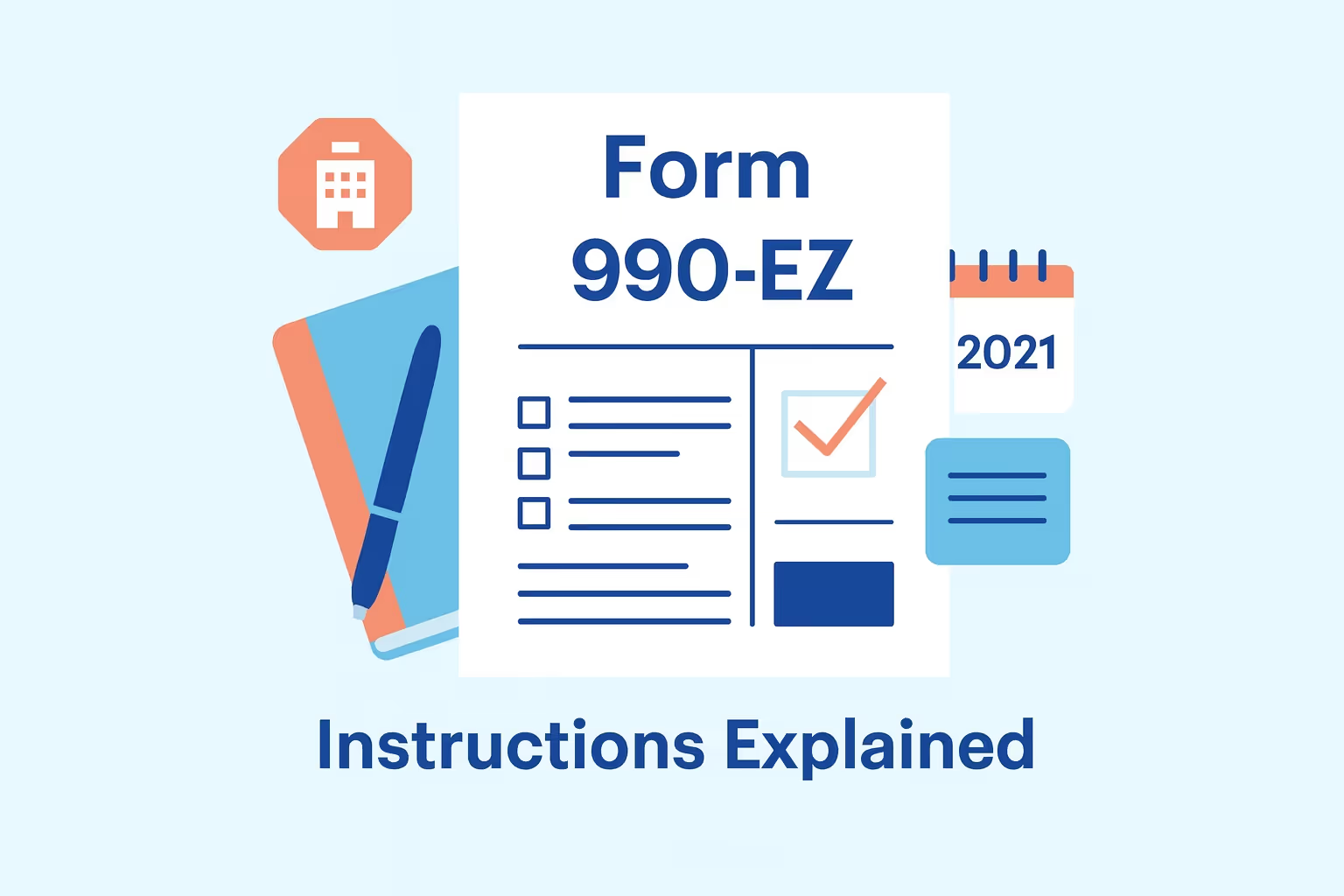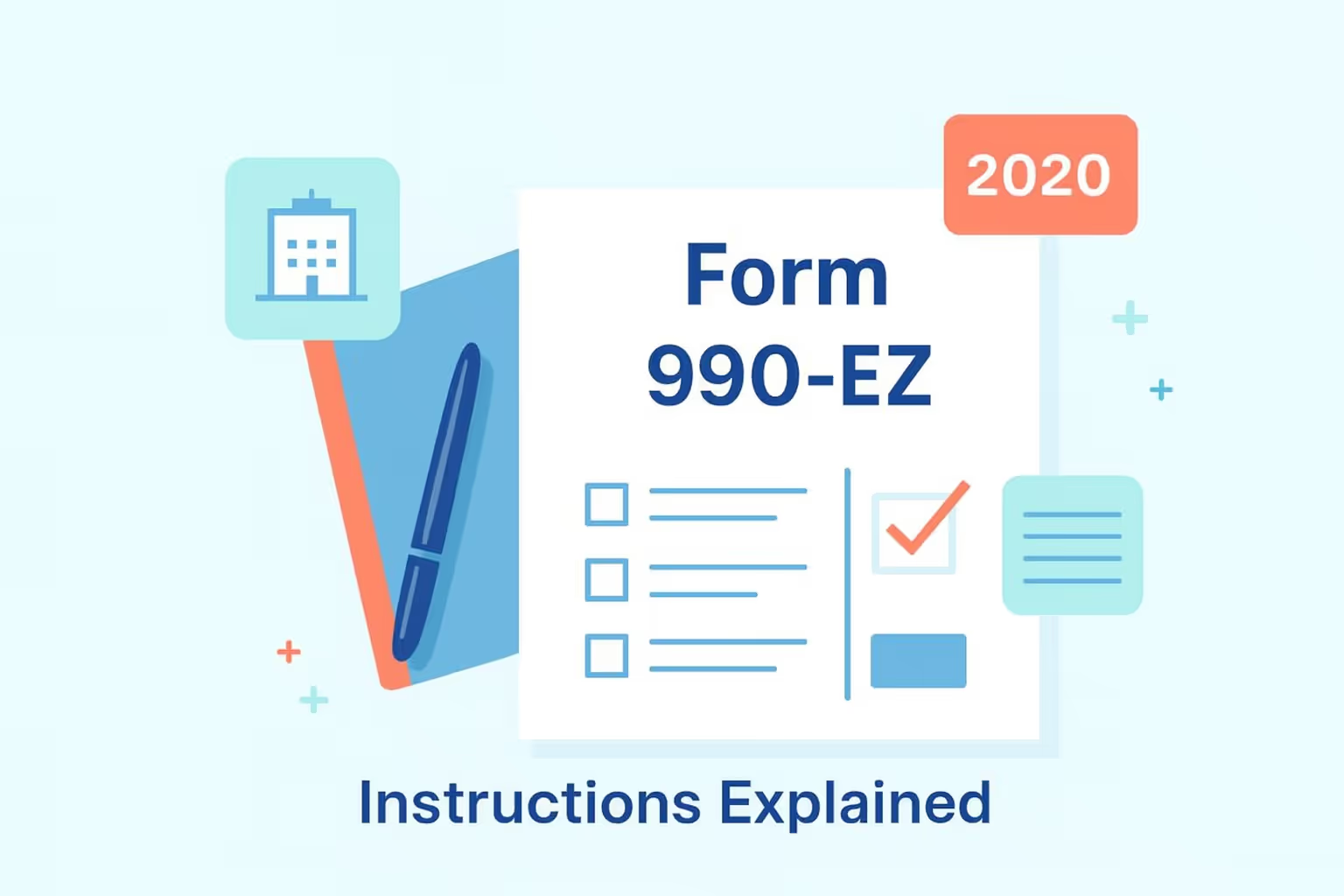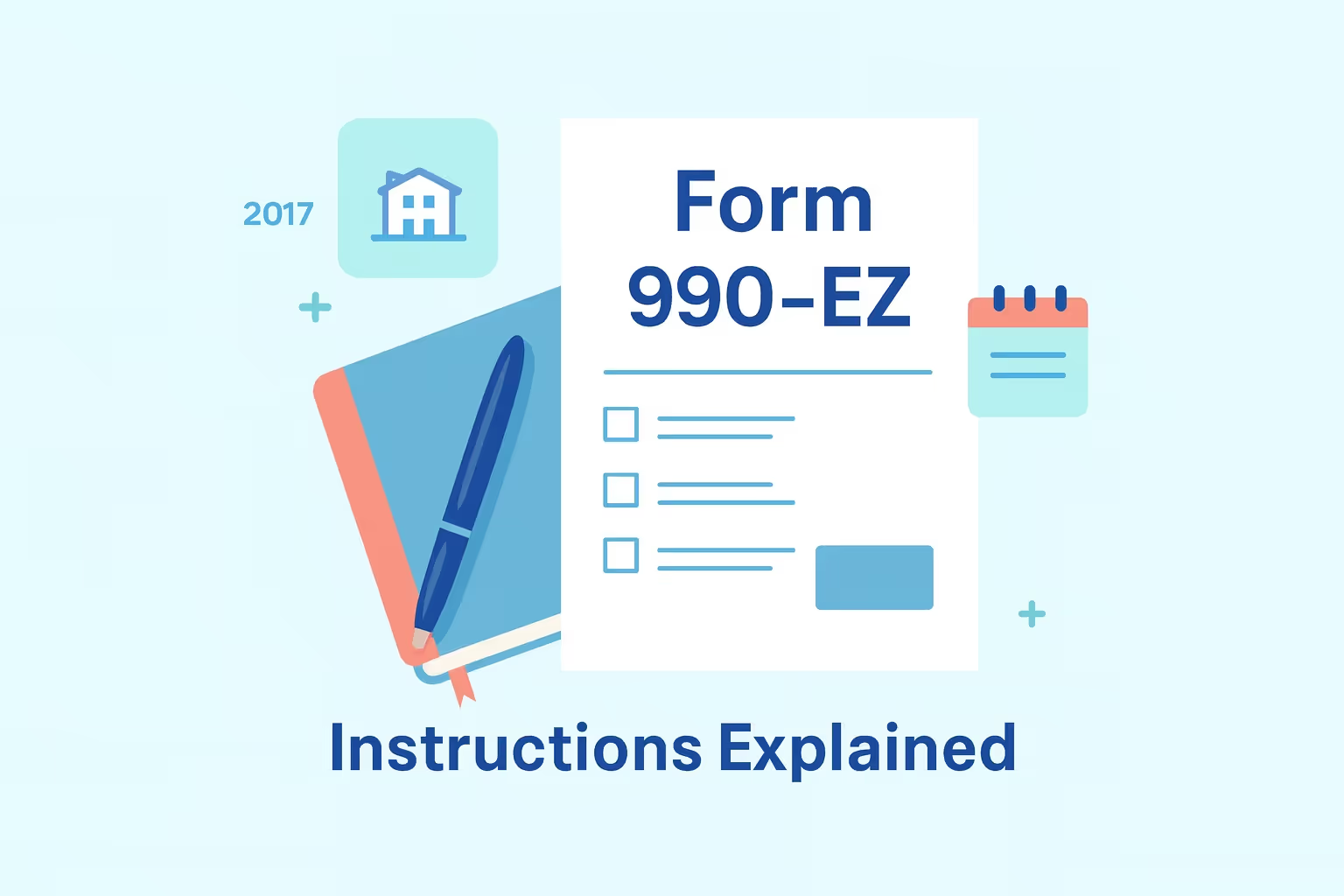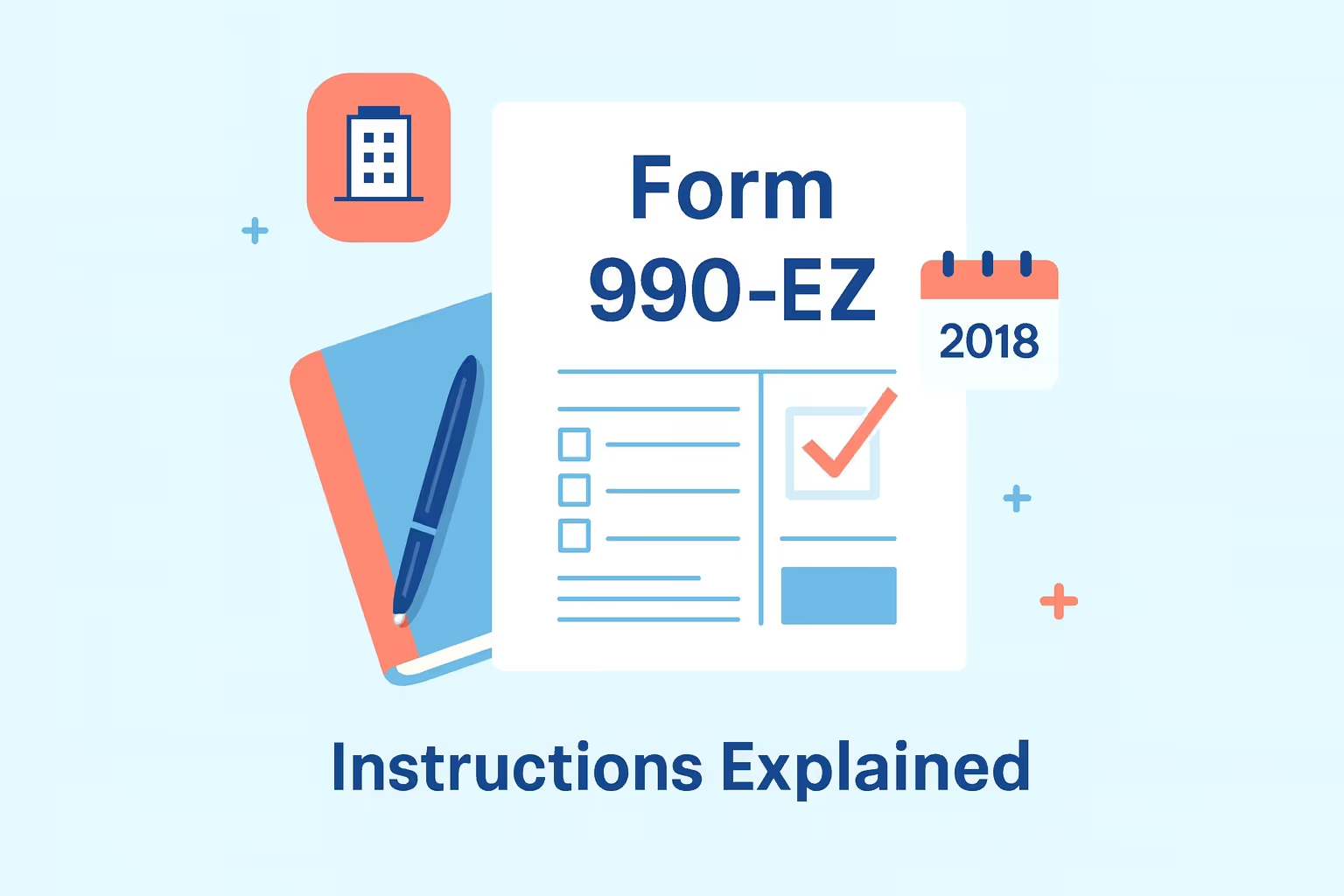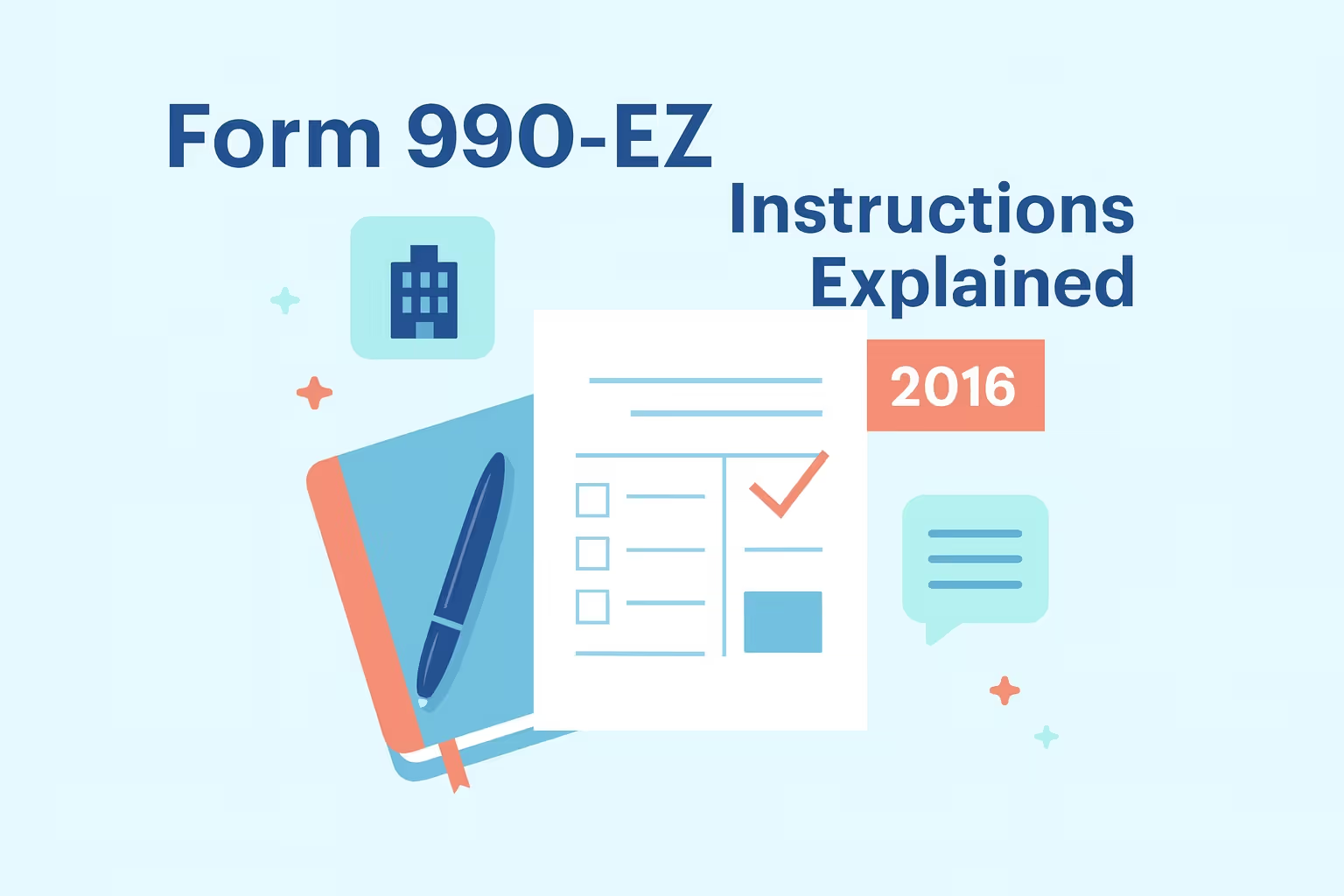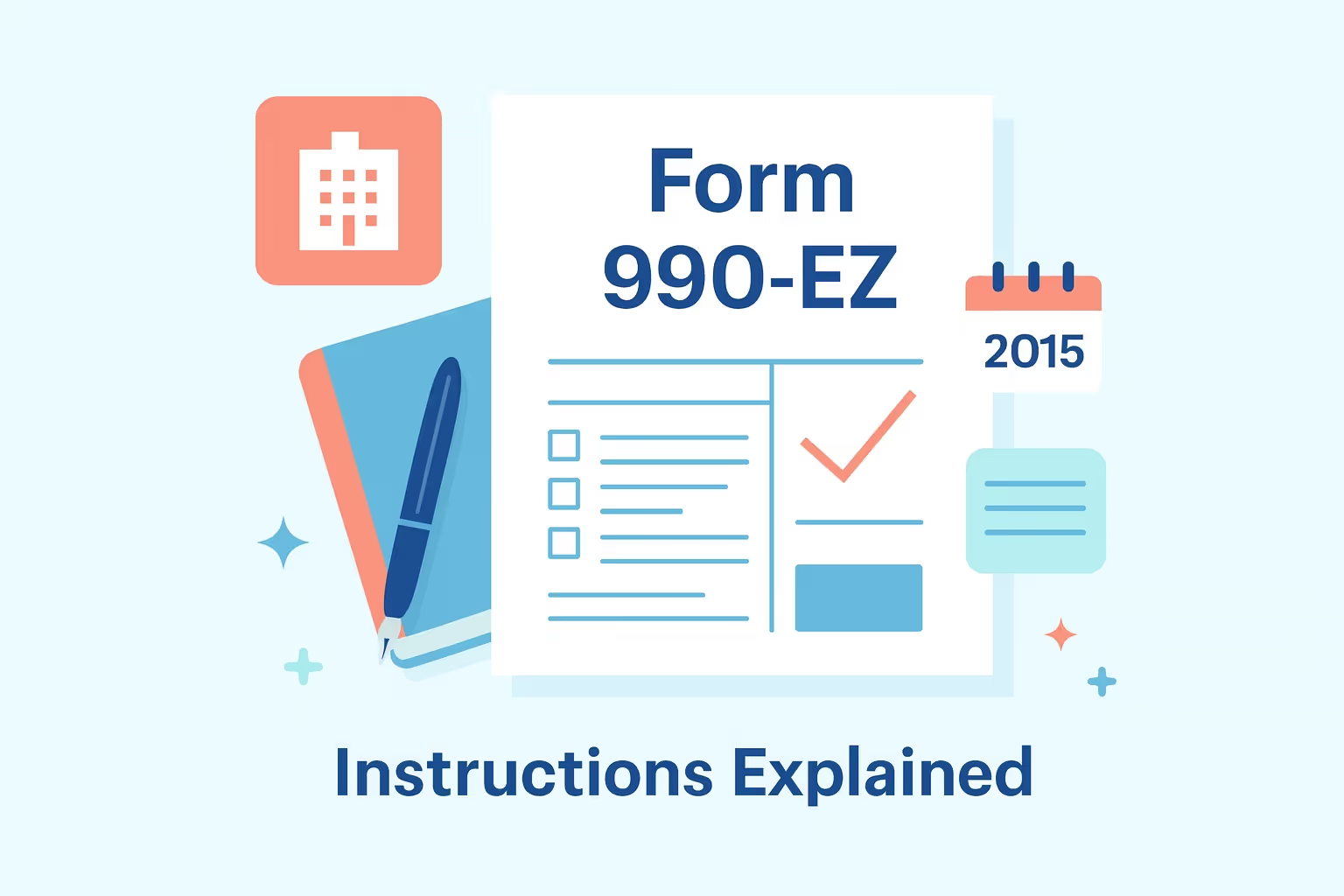
What IRS Form 990-EZ Is For
IRS Form 990-EZ (2023) is a simplified short-form return that smaller tax-exempt organizations must file with the IRS. It applies to nonprofits with gross receipts under $200,000 and total assets under $500,000 at the end of the tax year.
This form allows tax-exempt entities, such as nonprofits and public charities, to report their financial activities, governance, and programs, ensuring compliance with the Internal Revenue Code. Filing Form 990-EZ helps organizations maintain their tax-exempt status and avoid non-compliance penalties. Accurate filing is crucial for ensuring transparency and meeting IRS requirements.
When You’d Use IRS Form 990-EZ
Form 990-EZ is used by smaller tax-exempt organizations that meet specific criteria set by the IRS. It applies to organizations with gross receipts under $200,000 and total assets under $500,000 at the end of the tax year. If an organization meets these thresholds, it can file Form 990-EZ instead of the complete Form 990.
Organizations must file Form 990-EZ if they qualify as tax-exempt entities under the IRS definition, such as public charities, and if their activities align with the organization's primary exempt purpose. Organizations that fail to meet these criteria, including private foundations or nonexempt charitable trusts, must file the complete Form 990.
Filing late or incorrect returns can result in penalties. It is essential to review your organization’s status each year to determine which filing method is appropriate.
Key Rules or Details for 2023
All tax-exempt organizations must file IRS Form 990-EZ electronically in 2023. Paper submissions are no longer accepted, in line with the IRS's push to streamline nonprofit tax filing. Penalty increases are being enforced, with smaller organizations facing up to $12,000 in penalties, and larger organizations potentially incurring up to $60,000 for failure to file on time.
- Nonprofit organizations must file Form 990-EZ if they meet the eligibility criteria, which include having gross receipts of under $200,000 and total assets of under $500,000.
- Organizations that exceed the income tax filing thresholds must use Form 990 instead of Form 990-EZ.
- Filing deadlines must be strictly followed to avoid penalties and the risk of losing tax-exempt status.
Step-by-Step (High Level)
Filing Form 990-EZ involves several essential steps to ensure compliance with IRS requirements. Follow these steps:
- Gather all required information, including financial data, contributions, and public support for the tax year.
- Complete Parts I through VI of Form 990-EZ, ensuring all required fields are filled out accurately.
- Attach supplemental schedules, such as Schedule O, to provide any additional information, like significant dispositions.
- Submit the form online through an IRS-approved e-file provider to comply with electronic filing requirements.
- Retain copies of the completed form and all supporting documents for at least three years for IRS inspection.
These steps ensure your organization meets IRS filing requirements.
Common Mistakes and How to Avoid Them
Many organizations make mistakes when filing Form 990-EZ, resulting in penalties. One mistake is leaving required fields blank. If a section does not apply, organizations should enter “N/A” or “0” instead of leaving it blank.
Another common issue is misreporting financial information. It is essential to accurately report contributions, grants, and other revenue sources to avoid complications. Failing to attach required supplemental information, such as Schedule O, is also problematic.
Organizations must ensure that all required schedules are completed and submitted. Failing to comply with IRS filing requirements can result in the maximum penalty and jeopardize the organization's exempt status. Proper review before submission can help avoid these issues.
What Happens After You File
Once you have filed your Form 990-EZ, the IRS will process the return. Electronic submissions typically take 4–6 weeks, but amended returns may require more time. If the IRS needs further clarification or additional information, they will send a notice, which may include a letter requesting further details or corrections.
Organizations may receive a confirmation letter once the return has been processed. If the form is incomplete or contains errors, the IRS may reject it. In that case, the organization will need to correct and resubmit the return promptly.
Failure to respond to IRS notices may result in penalties and the loss of public charity status. Ensure all requested information is provided promptly to avoid complications and maintain compliance.
FAQs
What happens if my organization files Form 990-EZ late?
If an organization files Form 990-EZ late, it may face penalties, including fines up to $12,000 for smaller organizations. Penalty increases can occur for each day past the due date. To avoid these penalties, nonprofits should file the return on time or request an extension via the IRS website.
Does my organization qualify for Form 990-EZ based on gross receipts or assets?
An organization qualifies for Form 990-EZ if it has gross receipts under $200,000 and total assets under $500,000 by the end of the fiscal year. If these thresholds are exceeded, the organization must file the complete Form 990. It is essential to review these criteria each year to determine eligibility.
What information is required to file Form 990-EZ?
Organizations must provide comprehensive information, including financial statements, public support, and a list of interested persons. The return should also include details about the organization's activities conducted, governance, and any significant changes during the tax year.
How can we request an extension for filing Form 990-EZ?
To request an extension for filing Form 990-EZ, organizations must submit Form 8868 to the IRS. The extension grants an additional 3 months to file the return, but it does not extend the time for paying any due income tax. Ensure that all required information is submitted by the new extended due date.
What should be included in Schedule O?
Schedule O must include all necessary supplemental information, such as explanations for significant changes or decisions made by the directors. This schedule also covers activities conducted and details about any political campaign involvement. It is critical to complete this schedule accurately to avoid penalties.
What happens if our organization fails to file for three consecutive years?
Failing to file for three consecutive years can lead to the automatic revocation of the organization's 501(c) tax-exempt status. This can affect eligibility for public support and other nonprofit benefits. If this happens, the organization must reapply for tax-exempt status, which involves a lengthy process.
Organizations that require additional support with nonprofit reporting obligations may consult the Federal Fillable Tax Forms and Guides for access to related IRS forms, schedules, and prior-year instructions.
















